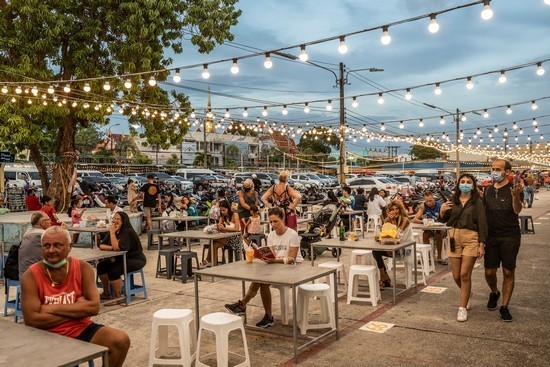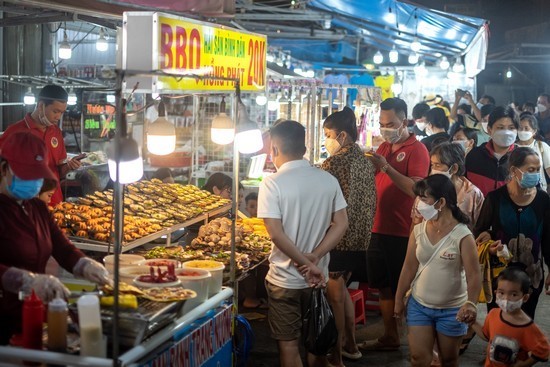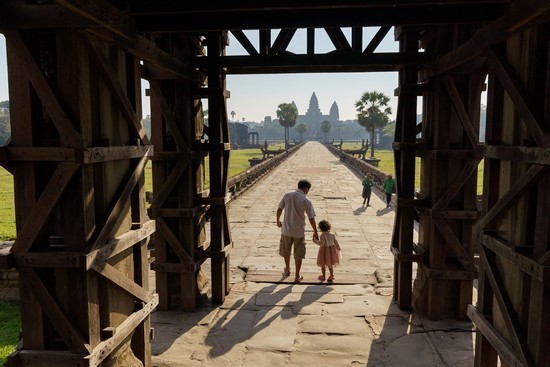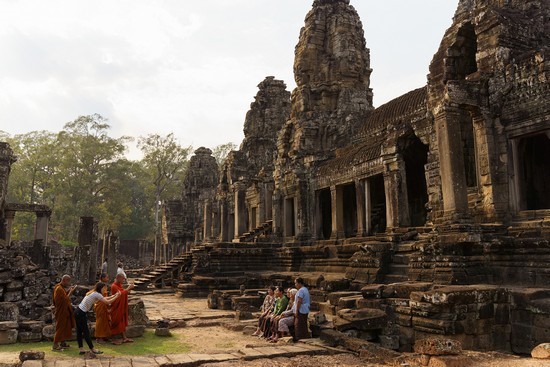Their flights were more expensive and
took longer, their favorite restaurant was shuttered, and they had to take
coronavirus tests on the first and fifth days of their trip. But the biggest
hassle for Brian Lamberty and Paola Laird — retirees from London — in their
long-awaited return to Phuket Island in Thailand was the paperwork.
اضافة اعلان
Before their
February trip, Laird spent nearly three hours uploading all the documents —
vaccination records, hotel reservations, and proof of health insurance among
them — needed for the Thailand Pass, an entry requirement instituted for
international travelers during the pandemic. “For many people who are not
computer literate, it’s going to be a problem,” Laird said.
After a long and
painful hiatus, and despite rising cases of coronavirus in some Southeast Asian
countries and lingering
US government warnings against travel to most of them,
international tourism is now gradually returning to Southeast Asia.
Lamberty and
Laird are among the early waves of visitors since the pandemic restrictions
turned the region’s tourism playgrounds into ghost towns in early 2020. More
countries in recent weeks announced that they are ready to admit fully
vaccinated foreign tourists, or soon will be, though still within limits.
 Visitors gather at a night market on Phuket Island in Thailand, February 27, 2022.
Visitors gather at a night market on Phuket Island in Thailand, February 27, 2022.
The rollout of
vaccines in
Southeast Asia and rollback of coronavirus restrictions globally
are prompting the reopening. Now, the war in Ukraine is complicating the travel
picture everywhere, as the general unease could make people think twice about
booking a big trip — or potentially opt for Southeast Asia, which is around
7,240km from Ukraine, instead of Europe.
In November,
Thailand and
Cambodia were among the first countries in Southeast Asia to fully
reopen to tourists. After an omicron surge, Thailand in December suspended most
tourist arrivals, but on February 1 resumed its nationwide “Test & Go”
program, which requires hotel isolation and a PCR test the first day and a
rapid test on the fifth day. Days later, Bali fully reopened to foreigners,
though with a quarantine of three to seven days (then dropped the quarantine
requirement this month). The Philippines followed on February 10, with no
quarantine but with social distancing in some locations.
Vietnam announced that
it would open its borders Tuesday to international tourists, with a one-day
hotel isolation requirement. Meanwhile, Malaysia recently announced it was
reopening April 1 without a quarantine.
 Visitors gather at a night market on Phu Quoc Island in Vietnam, February 26, 2022.
Visitors gather at a night market on Phu Quoc Island in Vietnam, February 26, 2022.
As the once
tourist-dependent region reopens its borders, travelers should expect more
paperwork, higher airfares, cheaper hotels (for the short term) and fewer
crowds — especially since
China, the biggest single source of tourists in the
region, has no plans to reopen its borders anytime soon.
Travel operators
are grappling with a shortage of labor, lingering uncertainty over the virus
and now the war in Ukraine, and impatience — they worry that those deeply
missed tourists will go elsewhere in the region unless their own country is the
first to fully reopen.
“I think for the
next 12 months it’s going to be pretty complicated to travel in Asia,” said
Adam Platt-Hepworth, whose Grasshopper Adventures cycling tour company worked
with 30,000 travelers in 2019 and fewer than 50 in 2020. “The biggest challenge
overall is just going to be restarting after so long, not just with our people
but with hotels and restaurants and anyone in travel. It’s been a long time.
People are rusty.”
 Visitors at Angkor Wat in Siem Reap, Cambodia, February 26, 2022.
Complications
abound for travelers
Visitors at Angkor Wat in Siem Reap, Cambodia, February 26, 2022.
Complications
abound for travelers
Before the
pandemic, Southeast Asia was one of the fastest-growing regions in the world
for international tourism, with a record 139 million visitors in 2019, a jump
of about 8 percent compared with 2018, according to the
UN World Tourism Organization (UNWTO).
The emerald
waters of Halong Bay in Vietnam were crowded with hundreds of cruise boats,
rooftop bars in Kuala Lumpur, Malaysia, teemed with partyers, and walking on
streets on Thai islands like Phuket meant enduring shoulder-to-shoulder crowds.
Tourist attractions across the region were congested with package tours from
China, the world’s biggest source of outbound tourism for the past decade.
According to the UNWTO, about 150 million
Chinese travelers spent $277 billion
in 2018 alone.
Countries like
Thailand, Vietnam, Singapore, and Cambodia were among the favorite destinations
of Chinese tourists. But as the coronavirus outbreak in China morphed into a
global pandemic in early 2020, locations in the region that depended on foreign
visitors were deserted. Last year, foreign arrivals to Southeast Asia plummeted
to 3.3 million, around 2 percent of the record number in 2019.
This year, with
the incremental revival of
international tourism, visitors will encounter a
raft of constraints as well as rewards, according to tourists and travel
companies in the region.
Lamberty and
Laird vacationed in Phuket 16 times before the pandemic. They were usually out
and about on the island and enjoyed visiting temples and taking Thai cooking
classes. This time, they took it easy, visiting friends and relaxing at their
go-to beachfront hotel, Dusit Thani Laguna Phuket, on the Andaman Sea. They
were sad to see that boutiques had closed in a nearby shopping center, now a
COVID-19 testing site.
“You have a
memory of what’s happened before and what was here, but everybody has to
compromise,” Laird said. “Be brave about travel and go for it; the prize is
just being here.”
 Visitors at the Bayon temple in Siem Reap, Cambodia, February 26, 2022.
Visitors at the Bayon temple in Siem Reap, Cambodia, February 26, 2022.
Travelers going
after that prize should be prepared to endure virus tests and even quarantines,
and purchase health and travel insurance before their arrival. Other
suggestions: Be ready to download government travel apps, upload vaccination
and travel documents, and acknowledge that a positive virus test result could
send you into quarantine or cause a missed flight. Don’t be surprised if
service at hotels, restaurants, and tour companies is spotty or if they are
short-staffed — or if the government rules change suddenly while you are on
holiday.
Lush countryside and
local dishes still beckon
Ad and Patricia Ketelaars, semiretired Dutch entrepreneurs who moved to
Singapore seven years ago, last month decided to take their first adventure
trip in the region in two years. They wanted to cycle in Thailand on a
self-guided tour, but it was “too complicated,” Ad said.
They opted for
Cambodia and booked a guided tour with Grasshopper Adventures, setting out on
February 28 from Phnom Penh and ending eight days later in Siem Reap.
They were most
looking forward to returning to the lush countryside, said Ad, just before the
trip and in between taking a coronavirus test in
Singapore and researching the
best hospitals in Cambodia.
“The anxiety of
these types of things is, what if you test positive?” he said. “You want to
make sure you wind up in a place that can deal with it.”
Michael Williams,
a cargo pilot who lives in Wisconsin, plans to travel to Vietnam at the end of
this month, to finally meet the woman from Hanoi he has been dating online for
a year.
After talking
daily for hours on
WhatsApp, he and his girlfriend and her daughter will be
together to start figuring out the future, Williams said. They hope to have
time for a beach weekend in Danang, and he is looking forward to trying local
dishes and soaking up the history and culture.
He will get a
booster before the flight, so he is not worried about an outbreak, and he is
not concerned about Russia’s war on Ukraine as long as it is contained to
Eastern Europe.
“It’s just a matter of
making it real and getting there,” he said.
Read more Travel



